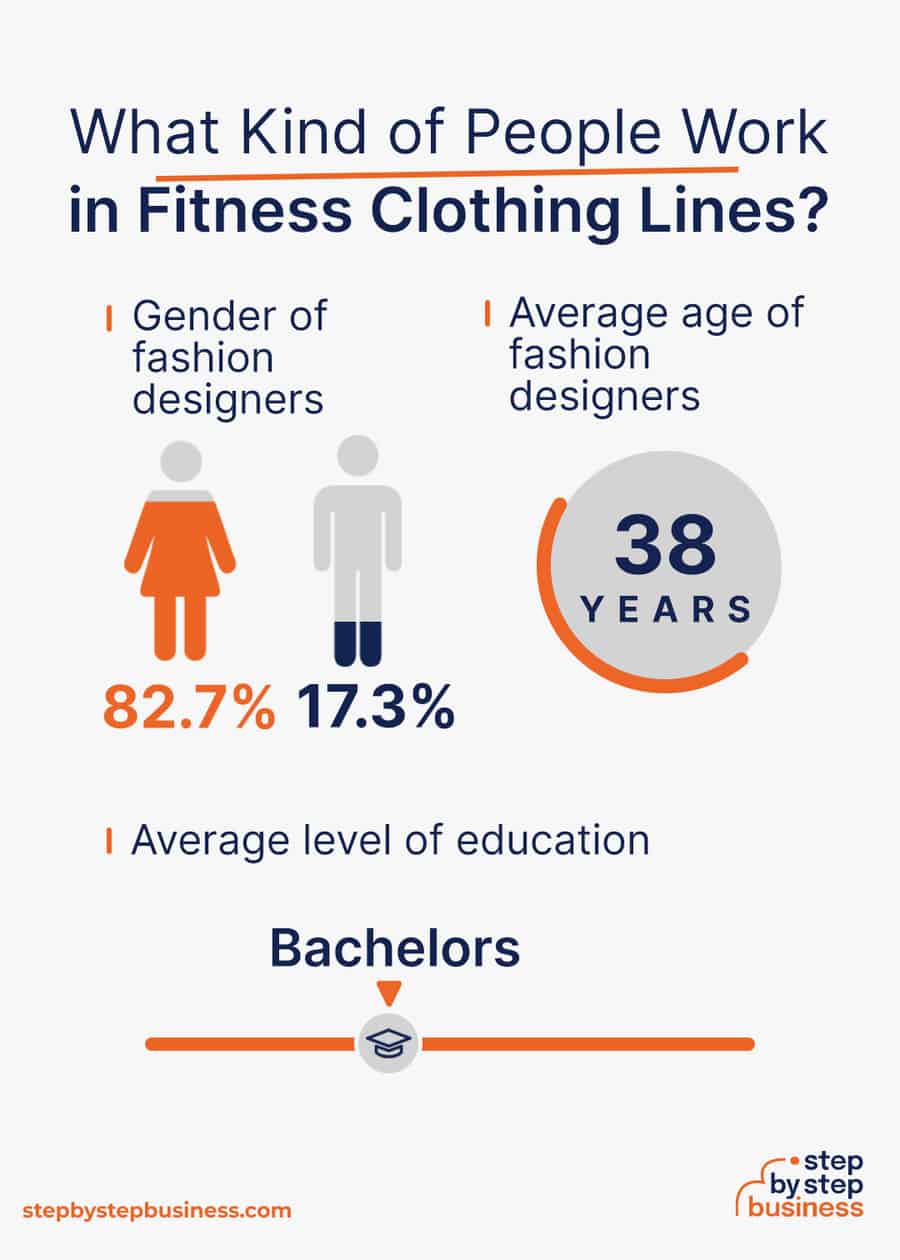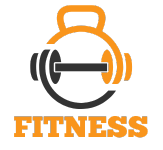Thinking about starting a fitness apparel line? This guide will walk you through the essential steps to launch your own clothing brand startup.
Can you start a fitness apparel line with a small budget? Yes, you can, by focusing on a niche, leveraging e-commerce, and starting with limited runs.
What is the most important aspect of starting a fitness apparel line? Branding fitness apparel effectively is crucial for standing out in a competitive market.
This comprehensive guide will cover everything you need to know to launch your gym wear business plan, from initial concepts to marketing athletic wear.

Image Source: stepbystepbusiness.com
Laying the Foundation: Your Vision and Niche
Before you even think about fabric or logos, you need a clear vision. What kind of fitness apparel do you want to create? Who is your target customer?
Discovering Your Brand’s Purpose
Every successful clothing brand startup begins with a strong mission. What problem are you solving for your customers? Are you catering to yoga enthusiasts, high-intensity athletes, or everyday comfort seekers?
- Define your “why”: What drives you to start this business? Is it a passion for fitness, a desire for better-designed gear, or a belief in sustainable activewear production?
- Identify your target audience: Create detailed customer personas. What are their ages, lifestyles, fitness habits, and spending habits? What are their pain points with current activewear?
- Pinpoint your niche: The fitness apparel market is crowded. Specializing can help you cut through the noise. Consider:
- Specific sports: Running, cycling, weightlifting, yoga, CrossFit.
- Activity levels: Performance gear vs. athleisure.
- Unique selling propositions (USPs): Eco-friendly materials, inclusive sizing, innovative designs, community focus.
Developing Your Brand Identity
Your brand identity is more than just a logo; it’s the personality of your business. It’s how customers perceive and connect with your fitness fashion wholesale offerings.
Crafting Your Brand Name and Logo
- Memorable and relevant: Your brand name should be easy to say, spell, and remember. It should also hint at your brand’s essence.
- Visual appeal: Your logo needs to be versatile, looking good on apparel, websites, and social media.
- Availability check: Ensure your chosen name and domain are available.
Defining Your Brand Voice and Aesthetic
- Tone: Is your brand edgy, empowering, minimalist, or playful?
- Visual style: This includes your color palette, typography, and imagery. This should resonate with your target audience.
- Storytelling: What narrative will you weave around your brand? This helps build emotional connections.
Product Development: From Concept to Creation
This is where your vision starts to take shape as tangible products. This involves sports apparel design and selecting the right athletic wear manufacturing partners.
Designing Your First Collection
- Sketching and ideation: Start by sketching your ideas. Think about functionality, comfort, style, and your brand’s aesthetic.
- Fabric selection: This is critical. Consider:
- Performance: Moisture-wicking, breathability, stretch, compression.
- Durability: How well will the fabric hold up to washing and wear?
- Feel: Softness, texture.
- Sustainability: Recycled materials, organic cotton, Tencel.
- Color palette: Choose colors that align with your brand and appeal to your target market.
- Sizing and fit: Offering inclusive sizing is increasingly important. Ensure your fit is consistent and comfortable.
Sourcing and Manufacturing
This is a crucial step for any clothing brand startup. You have several options for athletic wear manufacturing.
Manufacturing Options
- Domestic Manufacturing:
- Pros: Easier oversight, faster turnaround, potential for higher quality control, supports local economy.
- Cons: Can be more expensive.
- Overseas Manufacturing:
- Pros: Often lower production costs.
- Cons: Longer lead times, potential communication barriers, quality control can be more challenging, ethical sourcing concerns.
- Private Label Fitness Clothing: This involves buying pre-made, blank athletic wear from a supplier and adding your own branding.
- Pros: Lower upfront investment, faster time to market, less risk.
- Cons: Limited design control, less unique product, competition from others using the same blanks.
- Print-on-Demand (POD): Products are only printed when an order is placed.
- Pros: No inventory risk, very low startup cost, great for testing designs.
- Cons: Lower profit margins, limited product customization, quality can vary.
Finding the Right Manufacturer
When selecting an athletic wear manufacturing partner, consider:
- Minimum Order Quantities (MOQs): What is the smallest batch size they can produce?
- Quality of Workmanship: Request samples.
- Communication: Are they responsive and clear?
- Ethical Practices: Do they adhere to fair labor standards? This is especially important for sustainable activewear production.
- Experience: Have they worked with brands similar to yours?
Table 1: Manufacturing Options Comparison
| Feature | Domestic Manufacturing | Overseas Manufacturing | Private Label | Print-on-Demand (POD) |
|---|---|---|---|---|
| Cost | Higher | Lower | Moderate | Low initial cost, variable per-item cost |
| Time to Market | Moderate | Longer | Fast | Fastest |
| Design Control | High | High | Low | Very Low |
| Inventory Risk | High | High | Moderate | None |
| MOQs | Can be lower, but often higher than POD | Generally higher than domestic | Varies by supplier | None |
| Quality Control | Easier | More challenging | Relies on supplier | Relies on POD provider |
Sample Development and Testing
Before committing to a large production run, get samples made.
- Review samples meticulously: Check for fit, fabric quality, stitching, and overall appearance.
- Wear-test: Wear the samples during your target activities. Do they perform as expected?
- Gather feedback: Ask trusted friends, family, or potential customers to test and provide honest feedback.
Building Your Brand and Online Presence
A strong online presence is non-negotiable for a modern clothing brand startup. This involves branding fitness apparel and setting up your e-commerce activewear platform.
Creating Your E-commerce Store
- Platform choice: Popular options include Shopify, WooCommerce (for WordPress), Etsy, and Squarespace. Shopify is often favored for its user-friendliness and scalability.
- Website design:
- High-quality product photography: This is paramount for e-commerce activewear. Show your apparel from multiple angles, on diverse body types, and in action.
- Clear product descriptions: Highlight features, benefits, fabric details, and care instructions.
- Easy navigation: Customers should be able to find what they’re looking for quickly.
- Mobile responsiveness: Most shopping happens on mobile devices.
- Payment processing and shipping: Set up secure payment gateways and define your shipping policies.
Developing Your Marketing Strategy
Effective marketing athletic wear requires a multi-faceted approach.
Content Marketing
- Blog: Share fitness tips, workout routines, nutritional advice, and stories related to your brand.
- Social media:
- Instagram & TikTok: Highly visual platforms perfect for showcasing your apparel and lifestyle. Use high-quality imagery, videos, and engaging captions.
- Facebook: Build a community, run ads, and share updates.
- Pinterest: Great for visual discovery and driving traffic to your store.
- Email marketing: Build an email list and send newsletters with new arrivals, promotions, and exclusive content.
Influencer Marketing
Partner with fitness influencers who align with your brand values and have an engaged following. This is a powerful way to reach your target audience.
Search Engine Optimization (SEO)
Optimize your website and product descriptions with relevant keywords (e.g., “high-waisted leggings,” “moisture-wicking tank top”) to improve search engine rankings.
Paid Advertising
- Social media ads: Target specific demographics and interests on platforms like Facebook and Instagram.
- Google Ads: Reach customers actively searching for fitness apparel.
Operational Essentials and Business Planning
A solid gym wear business plan is your roadmap to success.
Legal and Financial Considerations
- Business registration: Register your business name and structure (sole proprietorship, LLC, etc.).
- Licenses and permits: Research any required local or federal licenses.
- Banking: Open a separate business bank account.
- Accounting: Track your income and expenses diligently. Consider accounting software like QuickBooks or Xero.
- Pricing strategy: Factor in production costs, marketing, overhead, and desired profit margin. Research competitor pricing.
Inventory Management
- Stock levels: Track what you have in stock to avoid overselling or running out of popular items.
- Reordering: Establish a system for reordering popular items before they sell out.
- Warehouse/Storage: Decide how you will store your inventory.
Customer Service
Excellent customer service is vital for building loyalty.
- Responsive communication: Answer inquiries promptly through email, social media, or phone.
- Hassle-free returns/exchanges: Make the process easy for customers.
- Gather feedback: Actively solicit customer reviews and testimonials.
Scaling Your Fitness Apparel Line
Once you’ve launched and gained traction, consider how to grow.
Expanding Your Product Line
- Introduce new styles and colors: Based on customer feedback and market trends.
- Explore complementary products: Accessories like water bottles, yoga mats, or gym bags.
- Consider collaborations: Partner with other brands or influencers for limited-edition collections.
Exploring Wholesale Opportunities
- Fitness fashion wholesale: Selling your products to gyms, studios, or other retailers can significantly increase your reach and revenue.
- Trade shows: Attend fitness and apparel trade shows to connect with potential wholesale buyers.
- Develop a wholesale catalog: Clearly outline your products, pricing, and terms.
Focusing on Sustainable Activewear Production
As consumer awareness grows, sustainable activewear production becomes a significant differentiator.
- Material sourcing: Prioritize recycled polyester, organic cotton, Tencel, or other eco-friendly fabrics.
- Ethical manufacturing: Partner with factories that have strong ethical labor practices.
- Reduced waste: Implement strategies to minimize fabric waste during production and packaging.
- Durable products: Create high-quality items that last longer, reducing the need for frequent replacement.
Frequently Asked Questions (FAQ)
Q: What are the biggest challenges when starting a fitness apparel line?
A: The biggest challenges include standing out in a saturated market, finding reliable manufacturers, managing inventory, and effective marketing.
Q: How much money do I need to start a fitness apparel line?
A: The initial investment can vary greatly. You can start with as little as a few hundred dollars for a print-on-demand model, or tens of thousands for custom manufacturing and larger inventory runs. Your gym wear business plan should outline your projected costs.
Q: What makes a good fitness apparel brand?
A: A good fitness apparel brand offers high-quality, comfortable, and stylish products, has a strong brand identity, connects with its target audience, and provides excellent customer service. Branding fitness apparel effectively is key.
Q: How do I find manufacturers for athletic wear?
A: You can find manufacturers through online directories (like Maker’s Row for US-based, or Alibaba for international), industry trade shows, and by asking for recommendations from others in the apparel industry. Thorough research and requesting samples are crucial for athletic wear manufacturing.
Q: Is private label fitness clothing a good option for beginners?
A: Yes, private label fitness clothing is a good option for beginners because it requires less upfront investment in design and manufacturing, allowing you to focus on branding and marketing.
Q: How important is sustainability in fitness apparel?
A: Sustainability is increasingly important to consumers. Offering sustainable activewear production can be a significant competitive advantage and align with the values of many fitness enthusiasts.
Q: What are the best platforms for selling activewear online?
A: Popular and effective platforms for e-commerce activewear include Shopify, WooCommerce, Etsy, and Squarespace. Each has its pros and cons depending on your technical skill and budget.
Q: How can I market my athletic wear effectively?
A: Effective marketing athletic wear involves a mix of social media marketing, influencer collaborations, content marketing (blogs, videos), email marketing, and paid advertising. Building a strong brand story is essential.
By carefully planning each step and staying dedicated to your vision, you can successfully launch and grow your own fitness apparel line in 2024 and beyond.
